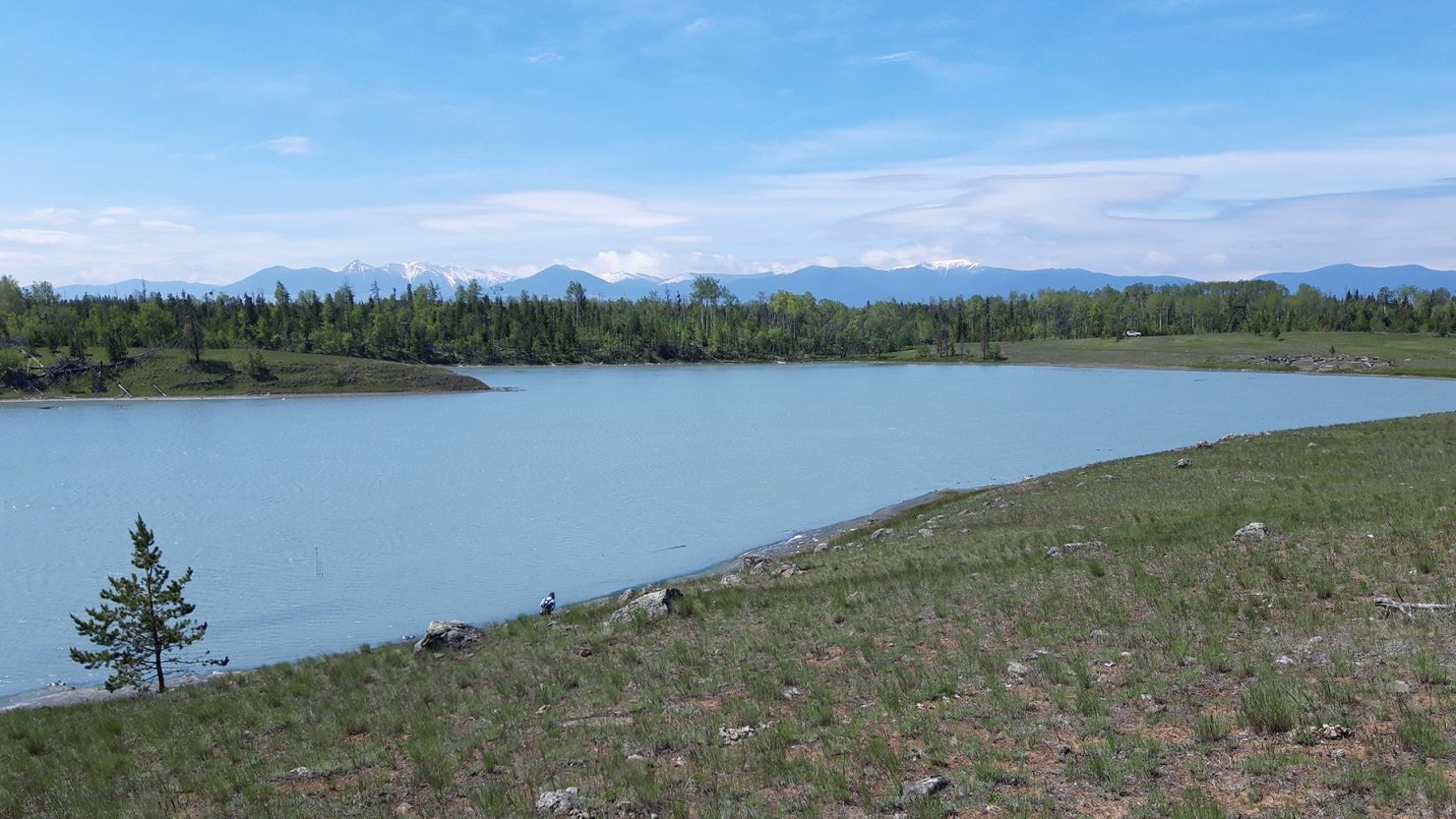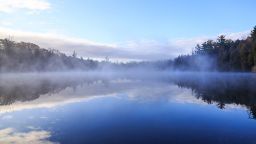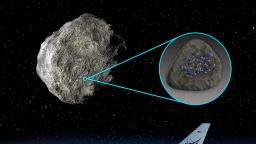begin quote from:
https://www.cnn.com/2024/02/17/world/last-chance-lake-origin-of-life-phosphate-scn/index.html
A shallow lake in Canada could point to the origin of life on Earth

Sign up for CNN’s Wonder Theory science newsletter. Explore the universe with news on fascinating discoveries, scientific advancements and more.
Imagine an entirely barren world. Before you is a volcanic landscape, devoid of flora and fauna. Scattered throughout this gray and black expanse are shallow bodies of water. In each of these natural pools brews a precise blend of chemicals and physical conditions that could serve as the source of life on our planet.
Some scientists have theorized the scene might have looked much like this, rather than an ocean setting, when life first emerged on Earth roughly 4 billion years ago, and a study centered around a present-day lake in the Canadian province of British Columbia offers new support for that idea.
The shallow, salty body of water situated on volcanic rock — known as Last Chance Lake — holds clues that carbonate-rich lakes in ancient Earth could have been a “cradle of life,” according to study coauthor David Catling, a University of Washington professor of geosciences. The finding, published in the journal Nature on January 9, could advance scientific understanding of how life began.
“We were able to look for the specific conditions that people use to synthesize the building blocks of life in nature,” Catling said. “We think that we have a very promising place for the origin of life.”
Catling and his colleagues first became aware of the lake as a place to focus their research after a literature review unearthed an unpublished master’s thesis from the 1990s that had recorded unusually high levels of phosphate there. But the researchers had to see it for themselves.
Last Chance Lake
Last Chance Lake is no more than 1 foot deep. Located on a volcanic plateau in British Columbia over 1,000 meters (3,280 feet) above sea level, it contains the highest levels of concentrated phosphate ever recorded in any natural body of water on Earth.
A critical component of biological molecules, phosphate is a chemical compound that contains the life-sustaining element phosphorus. It’s found in molecules such as RNA and DNA as well as ATP, a molecule necessary for energy production in all life forms. The abundance of phosphate at Last Chance Lake is more than 1,000 times more than what is typical for oceans or lakes, according to Sebastian Haas, a postdoctoral researcher studying the microbiology and chemistry of aquatic environments at the University of Washington who led the paper.
Between 2021 and 2022, the team of researchers visited Last Chance Lake to collect and analyze water and sediment samples.

That’s when they discovered that Last Chance Lake isn’t just a hotbed for phosphate but also the mineral dolomite, which allows phosphorus to build up in this environment and had formed in response to a reaction in the lake between calcium, magnesium and carbonate. The compounding chemical processes, influenced by minerals from the volcanic rock that the lake formed upon, as well as an arid climate, effectively produced the unique concentrations of phosphate — a set of conditions that researchers believe could have once led to the emergence of life on Earth, according to Haas.
“We are adding credibility to the idea that this type of environment would be favorable to the origin of life, and is plausible,” he said.
Last Chance Lake isn’t 4 billion years old — in fact, it’s estimated to have been around less than 10,000 years. The site is simply a modern analog, or a natural snapshot of the past that ultimately offers scientists a chance to better understand what primordial Earth may have looked like outside of a lab.
“There’s every reason to believe that similar lakes would have occurred on the first land about 4 billion years ago, because the volcanic rocks that Last Chance Lake sits on are basically a prerequisite for forming soda lakes,” Haas said. “And what we’re partially showing here is that soda lake water chemistry is the prerequisite for these high phosphate levels.”
Darwin’s warm little ponds
“Soda lakes” such as Last Chance Lake are shallow bodies of water rife with dissolved sodium and carbonate — much like baking soda — which typically come from interactions between water and volcanic rocks. They can be found throughout the world but are far less common than other saline bodies of water.
“These kinds of lakes, they have the highest levels of phosphate that match what people use in the lab to make (genetic molecules),” Catling said.
When scientists have tried in a lab to replicate the chemical reactions that make the biomolecules believed to be key to the origin of life, the necessary phosphate concentrations are up to a million times higher than what is normally found in the world’s natural bodies of water.
“If you had these types of lakes on the ancient Earth, they would be really high in phosphate, just like Last Chance Lake,” Catling added.
Bodies of water such as these have long been on scientists’ radar as potential sources of primordial life. In the 1800s, Charles Darwin first wrote about his “warm little pond” theory, which proposed that warm, shallow, phosphate-rich lakes could have been where the first molecules of life formed.
“Part of what (Darwin’s) envisioning is these bubbling pools … like Yellowstone,” said Matthew Pasek, a professor at the University of South Florida who studies phosphorus chemistry and origin of life sciences.
But this isn’t the only popular theory on how life first appeared on Earth billions of years ago. Another is that life began in hydrothermal vents in the deep sea.
The new study adds to the body of evidence that supports the warm little pond hypothesis, according to Pasek, who wasn’t involved with the research.
“The main point, that you can have such high phosphate concentrations in these ponds, is definitely bolstered by this finding,” he said. “And it shows, ‘This is how that can happen.’”
Still, phosphate in mass abundance isn’t the sole substance needed for the origin of life. That list of prerequisites also includes carbon and nitrogen sources, as well as the right chemical and physical elements — including phenomena known as wet-dry cycles — that allow for the formation of necessary chemical compounds and reactions.
But the authors said they’re not making the case that today’s Last Chance Lake has all the components needed for the building blocks of life — just that it contains a few critical pieces.
“Present-day Last Chance Lake doesn’t contain several chemicals that we now think are probably crucial for the origin of life,” Haas said, citing cyanide as one example. Past studies suggest a primordial version of the soda lake may very well have included the substance.
While this work “doesn’t uniquely solve the question of where life originated,” according to Woodward Fischer, a geobiologist at the California Institute of Technology who was not involved with the study, it “highlights environments at the Earth’s surface today that scientists can study in greater detail to better understand the mechanics responsible for establishing life on our planet and potentially elsewhere.”
The origin of life on Earth — and beyond
If life really did emerge in soda lakes on land, instead of at the bottom of the ocean, that knowledge could theoretically help the search for evidence of life beyond Earth.
“If you thought that life originated at the bottom of the ocean, you might have a closer look at the subglacial ocean on the moons of Saturn and Jupiter,” Haas said. “But if you think that life originated on Earth’s land surfaces, planets like Mars might be much more important.”
The same type of rock formation that produces soda lakes can be found on much of the surface of rocky planets such as Mars — which suggests that life may have formed in a similar fashion elsewhere in the universe.
“Understanding how life originated on Earth has this importance for our search for life outside of Earth,” Haas told CNN. “Getting a better understanding of how life originated on Earth informs where to look for life on other planets, or moons of other planets, in the solar system.”
Ayurella Horn-Muller has reported for Axios and Climate Central. Her book, “Devoured: The Extraordinary Story of Kudzu, the Vine That Ate the South,” is due out in the spring.
93 comments



No comments:
Post a Comment